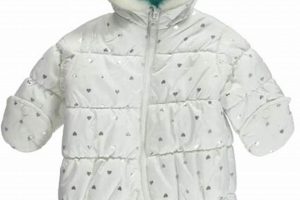This diminutive aquatic plant, known scientifically as Hemianthus callitrichoides ‘Cuba’, is characterized by its tiny, bright green leaves. Originating from Cuba, it quickly gained popularity in aquascaping due to its dense growth habit and ability to create a lush, carpet-like appearance on the aquarium floor. Its miniature size distinguishes it from other carpeting plants, making it suitable for smaller aquariums and creating a sense of scale in larger setups.
Its aesthetic appeal lies in its vibrant color and delicate texture, which enhances the visual interest of aquariums. More than just decoration, it offers functional benefits to the aquatic ecosystem. The dense growth provides shelter for small invertebrates and newly hatched fish fry. Furthermore, it contributes to water quality by absorbing excess nutrients and producing oxygen through photosynthesis. Its relatively recent introduction to the aquarium hobby has driven significant innovation in planted tank techniques.
Understanding the specific requirements for successful cultivation encompassing lighting, CO2 supplementation, fertilization, and substrate is crucial for achieving optimal growth and maintaining a thriving aquatic environment. Addressing these aspects will be the focus of subsequent sections.
Cultivation Strategies
Optimal growth of this species hinges on adhering to specific environmental and care guidelines. Attention to these factors will maximize its potential as a carpeting plant.
Tip 1: Illumination Intensity. Provide high-intensity lighting, typically exceeding 3 watts per gallon, to facilitate photosynthesis. Insufficient light leads to stunted growth and eventual decline. Utilize LED fixtures with a full spectrum for optimal results.
Tip 2: Carbon Dioxide Supplementation. Supplement the aquarium water with carbon dioxide (CO2) injection to achieve a concentration of 20-30 ppm. CO2 is a crucial element for efficient photosynthesis, particularly in demanding species. Monitor CO2 levels and adjust accordingly.
Tip 3: Nutrient Availability. Employ a balanced liquid fertilizer regime to ensure the availability of essential macro and micro nutrients. Deficiencies in nitrogen, phosphorus, potassium, and trace elements can hinder growth. Conduct regular water tests to monitor nutrient levels.
Tip 4: Substrate Selection. Utilize a nutrient-rich substrate formulated for planted aquariums. These substrates provide essential nutrients and support root development. Avoid inert substrates that lack nutrient-holding capacity.
Tip 5: Water Parameters. Maintain stable water parameters, including a temperature of 72-78F (22-26C) and a pH of 6.0-7.5. Fluctuations in water parameters can stress the plant and inhibit growth. Regular water changes are essential.
Tip 6: Pruning and Maintenance. Regularly prune the plant to maintain its desired shape and prevent excessive shading of lower leaves. Dense growth can restrict light penetration and lead to lower leaf die-off. Use sharp scissors for precise trimming.
Tip 7: Water Circulation. Ensure adequate water circulation to deliver nutrients and CO2 throughout the aquarium. Poor circulation can create stagnant areas where nutrient deficiencies develop. Utilize a powerhead or circulation pump to enhance water movement.
Adhering to these guidelines ensures vigorous growth, a lush carpet, and the full realization of its potential as a centerpiece aquatic plant.
The following sections will detail common challenges and troubleshooting strategies associated with cultivating this species.
1. Intense illumination
Intense illumination is a non-negotiable requirement for the successful cultivation of Hemianthus callitrichoides. This species’ diminutive size and high growth rate demand significant light energy to drive photosynthesis. Insufficient light directly inhibits its ability to produce the necessary carbohydrates for growth, resulting in stunted development, etiolation (elongated growth with pale coloration), and eventual decline. A real-world example is observed when a tank is lit with low-output LEDs; the plant fails to spread and often develops algae on its leaves, indicating photosynthetic stress. Understanding this connection is critical for hobbyists and commercial growers aiming for a healthy, carpeting effect.
The intensity of light, measured in lumens or PAR (Photosynthetic Active Radiation), should be tailored to the specific aquarium dimensions and water depth. As light penetrates water, its intensity diminishes. Therefore, deeper tanks require more powerful lighting systems. Furthermore, the spectrum of light is crucial. Hemianthus callitrichoides benefits from a full spectrum of light, including red and blue wavelengths, which are essential for chlorophyll absorption. Failure to provide the correct light spectrum can lead to poor coloration and reduced growth rates. For instance, using a light source that is too heavy on the yellow spectrum will not deliver the necessary energy for the plant to thrive, irrespective of the lumen output.
In summary, the connection between intense illumination and the health of Hemianthus callitrichoides is direct and crucial. Adequate light intensity and spectrum are essential for photosynthesis, growth, and overall plant vitality. Failure to provide sufficient light results in predictable negative consequences. A thorough understanding of light requirements and careful selection of lighting equipment are therefore paramount for successful cultivation, preventing common pitfalls and enabling the plant to flourish as a visually striking carpet in the aquarium environment.
2. CO2 Supplementation
Carbon dioxide (CO2) supplementation is a pivotal factor in the successful cultivation of Hemianthus callitrichoides (HC), commonly known as dwarf baby tears, within an aquarium environment. This species, while aesthetically desirable for its carpeting effect, has a relatively high CO2 demand compared to other aquatic plants. Insufficient CO2 levels severely limit its growth potential and overall health.
- Photosynthetic Efficiency
HC requires a significantly higher CO2 concentration than naturally occurs in most aquariums to achieve optimal photosynthetic rates. Carbon dioxide serves as the primary carbon source for the plant, enabling it to produce the necessary sugars for growth and development. Without adequate CO2, the plant’s ability to efficiently convert light energy into chemical energy is compromised, leading to stunted growth and nutrient deficiencies. For instance, in aquariums without CO2 injection, HC may exhibit slow or no growth, with leaves developing a pale or yellow coloration.
- Algae Competition
When CO2 levels are limiting, HC becomes susceptible to competition from algae. Algae often possess a lower CO2 compensation point, meaning they can thrive at CO2 concentrations that are insufficient for HC. This leads to algae overgrowth, which smothers HC, preventing it from accessing light and nutrients. A common example is the appearance of hair algae or black beard algae on HC leaves in tanks with inadequate CO2 supplementation.
- Nutrient Uptake
The availability of CO2 directly influences the plant’s ability to uptake other essential nutrients from the water column. CO2 is required for certain enzymatic processes involved in nutrient absorption. When CO2 levels are low, the plant’s capacity to absorb nitrogen, phosphorus, and potassium is reduced, leading to nutrient deficiencies and impaired growth. For instance, even with adequate fertilization, HC may still exhibit signs of deficiency if CO2 is lacking.
- pH Stability
CO2 injection also plays a crucial role in maintaining pH stability within the aquarium. The introduction of CO2 lowers the pH of the water, creating a more acidic environment that is favorable for HC growth. A stable pH is important to prevent fluctuations that can stress the plant and inhibit its ability to thrive. For example, sudden increases in pH due to fluctuating CO2 levels can cause HC to melt or develop brown spots.
In conclusion, CO2 supplementation is not merely an optional addition but a fundamental requirement for successful Hemianthus callitrichoides cultivation. It directly impacts photosynthetic efficiency, reduces algae competition, enhances nutrient uptake, and stabilizes pH levels. Without proper CO2 levels, the potential of this plant to create a lush and vibrant carpet is severely limited. This explains the widespread use of pressurized CO2 systems or liquid carbon alternatives among aquascapers striving for thriving HC carpets.
3. Nutrient-rich substrate
The vitality and growth of Hemianthus callitrichoides, commonly known as dwarf baby tears, are inextricably linked to the presence of a nutrient-rich substrate. This species, characterized by its fine roots and carpeting growth habit, derives a significant portion of its nutritional requirements directly from the substrate. The substrate acts as a reservoir of essential macro and micro nutrients, providing a stable and readily available source for uptake. Without an adequate nutrient supply within the substrate, growth is severely limited, and the plant’s ability to form a dense, attractive carpet is compromised. Consider, for example, an aquarium utilizing inert gravel; the dwarf baby tears would exhibit stunted growth, yellowing leaves, and a failure to propagate effectively due to nutrient deficiencies.
The ideal nutrient-rich substrate for dwarf baby tears typically comprises a blend of components designed to provide both immediate and long-term nutrient release. These components may include aquasoil, laterite, or clay-based additives, all of which are capable of binding and slowly releasing essential nutrients like nitrogen, phosphorus, potassium, and trace elements. The substrate’s composition also affects its cation exchange capacity (CEC), which determines its ability to retain and exchange nutrients with the surrounding water. A substrate with a high CEC ensures that nutrients remain available to the plant roots for an extended period, even in the presence of fluctuating water parameters. The practical implication is evident when comparing two identical tanks, one using aquasoil and the other using sand. The aquasoil-based tank will consistently exhibit healthier and more robust dwarf baby tears growth.
In summary, the provision of a nutrient-rich substrate is a foundational requirement for cultivating thriving dwarf baby tears. It serves as a primary source of essential nutrients, supporting robust growth, vibrant coloration, and the formation of a dense, carpet-like appearance. The choice of substrate, therefore, warrants careful consideration, with emphasis placed on selecting options known for their nutrient content, CEC, and ability to support long-term plant health. While water column fertilization is beneficial, it cannot fully compensate for a deficient substrate, highlighting the fundamental importance of this element in successful cultivation.
4. Water parameter stability
Maintaining consistent water parameters is crucial for the successful cultivation of Hemianthus callitrichoides, commonly known as dwarf baby tears. This species is sensitive to fluctuations in water chemistry, and unstable conditions can lead to stunted growth, leaf melt, and even plant death. Therefore, understanding and diligently managing key water parameters are essential for achieving a thriving carpet of this aquatic plant.
- pH Stability
Dwarf baby tears thrive in slightly acidic to neutral conditions, with an optimal pH range of 6.0 to 7.0. Fluctuations outside this range can stress the plant, inhibiting nutrient uptake and causing leaf damage. For example, a sudden increase in pH can lead to the precipitation of essential nutrients, rendering them unavailable to the plant. Monitoring pH regularly and employing buffering agents, if necessary, is essential to maintain stability.
- Temperature Stability
Consistent water temperature is vital for the healthy growth of dwarf baby tears. The plant prefers a temperature range of 72F to 78F (22C to 26C). Rapid temperature changes can disrupt metabolic processes and weaken the plant’s resistance to diseases. Inconsistencies may arise from factors such as inadequate heater calibration or drastic ambient temperature variations. Utilizing a reliable aquarium heater and monitoring temperature regularly are key to mitigation.
- Ammonia, Nitrite, and Nitrate Levels
The nitrogen cycle plays a critical role in maintaining water quality. Elevated levels of ammonia and nitrite are toxic to aquatic plants, including dwarf baby tears, and can inhibit growth. While nitrate is a necessary nutrient, excessive levels can promote algae growth, outcompeting the plant for resources. Regular water changes and a well-established biological filter are essential for maintaining appropriate levels of these compounds.
- Carbonate Hardness (KH) Stability
Carbonate hardness (KH) influences pH stability and the availability of carbon dioxide (CO2), which is essential for dwarf baby tears photosynthesis. Stable KH levels prevent drastic pH swings that can stress the plant. Maintaining a KH within the range of 4 to 8 dKH provides a buffer against pH fluctuations and ensures sufficient CO2 availability, provided CO2 supplementation is implemented. A low KH, conversely, can lead to considerable pH swings throughout the day, impacting the plant’s metabolism.
In conclusion, maintaining stable water parameters is not merely a guideline but a fundamental requirement for the successful cultivation of dwarf baby tears. Fluctuations in pH, temperature, nitrogen compounds, and carbonate hardness can disrupt the plant’s metabolism and inhibit growth. Diligent monitoring and proactive management of these parameters are, therefore, essential for achieving a thriving carpet of this visually appealing aquatic plant.
5. Regular pruning
Regular pruning is an indispensable practice in the successful cultivation of Hemianthus callitrichoides, as it directly impacts growth density, light penetration, and overall plant health. Without consistent trimming, this carpeting plant tends to grow excessively dense, leading to a stratification effect where the lower layers of leaves are deprived of light. This deprivation triggers senescence and decay in the shaded areas, inhibiting new growth and creating an unsightly, uneven carpet. For instance, consider an unmaintained tank; the lower leaves turn yellow or brown, and the entire mat lifts away from the substrate due to decaying matter underneath.
The act of pruning serves not only to remove dead or dying foliage but also stimulates lateral growth. Cutting the vertical shoots encourages the plant to spread horizontally, filling in gaps and creating a denser, more uniform carpet. Furthermore, regular trimming improves water circulation throughout the plant mass, ensuring that all leaves receive adequate nutrients and carbon dioxide. Specific pruning techniques include trimming the top layer with sharp scissors to maintain a desired height and selectively removing overgrown sections to encourage even growth distribution. This proactive maintenance prevents shading and promotes vigorous expansion across the substrate. An illustrative scenario is an aquascaper selectively trimming taller portions of Hemianthus callitrichoides to promote lateral growth and prevent light blockage to lower leaves.
In conclusion, regular pruning is fundamental to maintaining a healthy and aesthetically pleasing carpet of Hemianthus callitrichoides. It prevents light deprivation, encourages lateral growth, and enhances water circulation. Neglecting this practice results in an uneven, unhealthy mat prone to decay. Therefore, consistent trimming, executed with precision and attention to detail, is essential for the long-term success of this popular aquatic plant.
6. Adequate circulation
Adequate circulation is a critical, often underestimated, factor in the successful cultivation of Hemianthus callitrichoides, commonly known as dwarf baby tears. This species, which forms a dense carpet, is particularly susceptible to localized nutrient deficiencies and CO2 depletion in areas of stagnant water. Without sufficient water movement, the leaves closest to the substrate can be starved of essential resources, hindering growth and potentially leading to decay. A direct cause-and-effect relationship exists: insufficient circulation results in localized deficiencies, while adequate circulation ensures even distribution of nutrients and CO2. An example is an aquarium with a powerful filter outflow directed across the dwarf baby tears carpet versus one where the outflow is obstructed; the former will exhibit more uniform growth and vibrant coloration.
The importance of adequate circulation extends beyond simply delivering nutrients. It also facilitates the removal of waste products and detritus that can accumulate within the dense foliage. These waste products, if left unchecked, can create an anaerobic environment, promoting the growth of harmful bacteria and contributing to the decline of the plant. Furthermore, improved circulation enhances gas exchange at the leaf surface, promoting efficient photosynthesis. Practical application involves strategically positioning powerheads or circulation pumps within the aquarium to create a consistent flow of water across the entire dwarf baby tears carpet, paying particular attention to areas that may be prone to stagnation, such as corners or behind decorations.
In summary, adequate circulation is not merely a supplementary component but an integral element in the successful cultivation of dwarf baby tears. It ensures the uniform distribution of nutrients and CO2, facilitates the removal of waste products, and promotes efficient gas exchange. Neglecting this aspect often results in localized deficiencies, decay, and an overall decline in the health and aesthetic appeal of the plant. Therefore, careful consideration of circulation patterns and appropriate placement of circulation devices are essential for realizing the full potential of Hemianthus callitrichoides as a captivating carpeting plant.
Frequently Asked Questions about Dwarf Baby Tears ( Hemianthus callitrichoides)
This section addresses common questions regarding the cultivation and maintenance of Hemianthus callitrichoides, providing concise answers based on established horticultural practices.
Question 1: Why are my Dwarf Baby Tears turning yellow?
Yellowing leaves typically indicate a nutrient deficiency, most commonly iron or nitrogen. Insufficient lighting or inadequate carbon dioxide (CO2) levels can also contribute. Water parameters, including pH and hardness, should be evaluated. Supplementing with appropriate fertilizers and verifying adequate lighting and CO2 are often necessary for remediation.
Question 2: How much light is required for successful growth?
Hemianthus callitrichoides requires high-intensity lighting, typically exceeding 3 watts per gallon. PAR (Photosynthetic Active Radiation) values should be at least 50 molms at the substrate level. The spectrum of light should also be considered, with full-spectrum LEDs often providing the most optimal results.
Question 3: Is CO2 injection absolutely necessary?
While Hemianthus callitrichoides can survive without CO2 injection under optimal conditions, its growth is significantly enhanced with CO2 supplementation. Without added CO2, growth is often slow and stunted, and the plant becomes more susceptible to algae. A target CO2 concentration of 20-30 ppm is generally recommended.
Question 4: What substrate is best suited for this species?
A nutrient-rich substrate designed for planted aquariums is essential. Aquasoil, which contains baked clay granules enriched with nutrients, is a popular choice. Inert substrates, such as plain gravel or sand, will not provide sufficient nutrients and should be avoided unless supplemented with root tabs or liquid fertilizers.
Question 5: How should Dwarf Baby Tears be propagated?
Hemianthus callitrichoides can be propagated through cuttings. Small portions of the plant can be carefully separated and replanted into the substrate. Ensuring the new cuttings have adequate lighting, CO2, and nutrients is essential for successful establishment.
Question 6: How often should I prune this plant?
Pruning frequency depends on the growth rate, which is influenced by lighting, CO2, and nutrient levels. Generally, trimming every 1-2 weeks is recommended to maintain a desired shape and prevent shading of lower leaves. Regular pruning also stimulates lateral growth, promoting a denser carpet.
In summary, successful Dwarf Baby Tears cultivation relies on meticulous attention to lighting, CO2, nutrient availability, substrate selection, water parameters and regular maintenance through pruning. Adherence to these practices significantly increases the likelihood of a thriving aquatic carpet.
Dwarf Baby Tears
This exploration has elucidated critical aspects of cultivating Hemianthus callitrichoides, emphasizing the interdependency of high-intensity illumination, carbon dioxide supplementation, nutrient-rich substrate, stable water parameters, regular pruning, and adequate circulation. Mastery of these elements determines the degree of success in establishing and maintaining a thriving carpet of this demanding species. The consequences of neglecting even one factor can range from stunted growth to outright failure, underscoring the commitment required for its successful propagation.
The sustained popularity of Hemianthus callitrichoides in aquascaping reflects its unique aesthetic contribution and the challenges inherent in its cultivation. Further research into nutrient uptake mechanisms and adaptive strategies could yield insights into more resilient cultivation methods. Continued adherence to established best practices, coupled with ongoing refinement of techniques, remains essential for realizing the full potential of Hemianthus callitrichoides in the dynamic landscape of aquarium horticulture.







